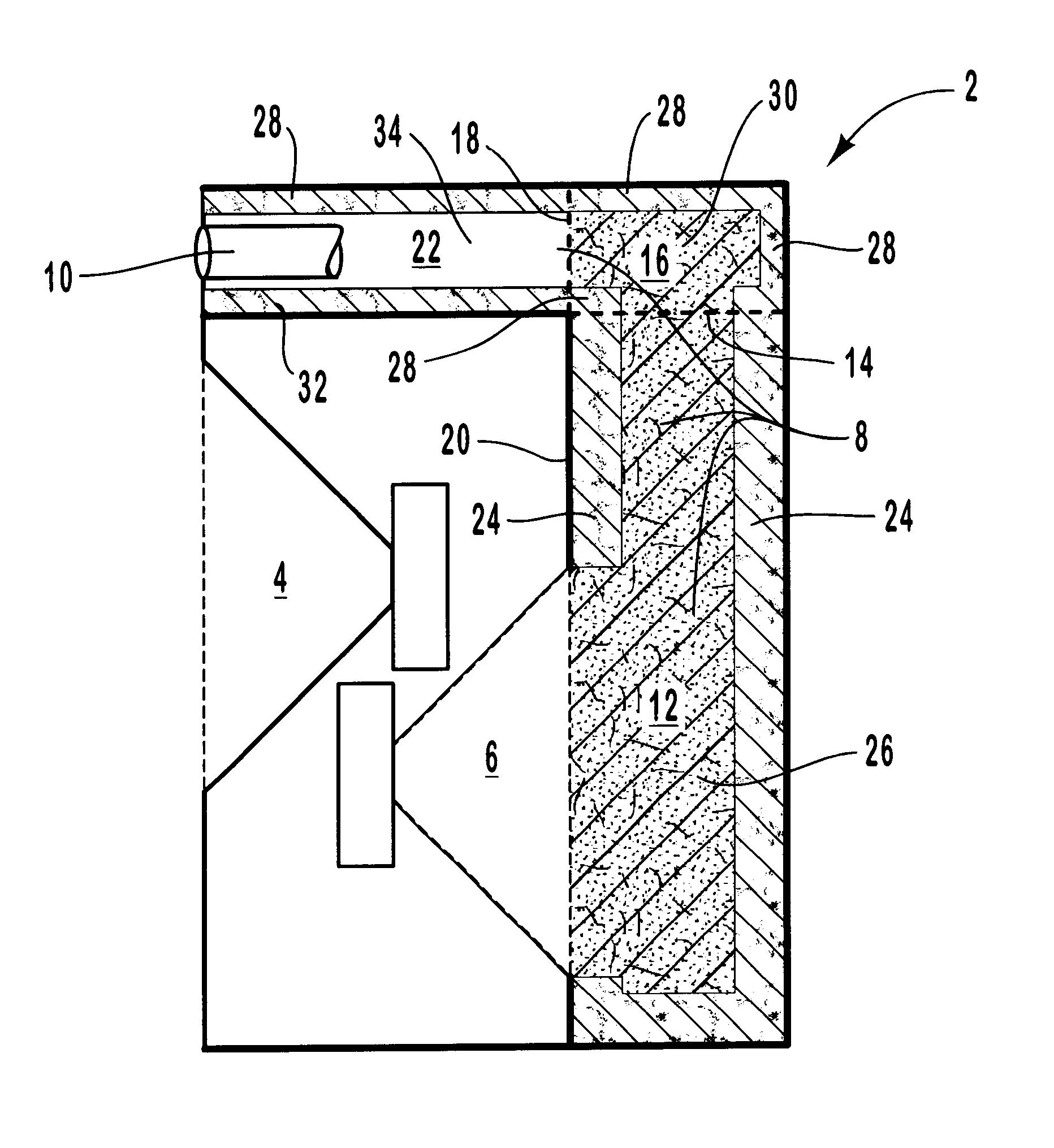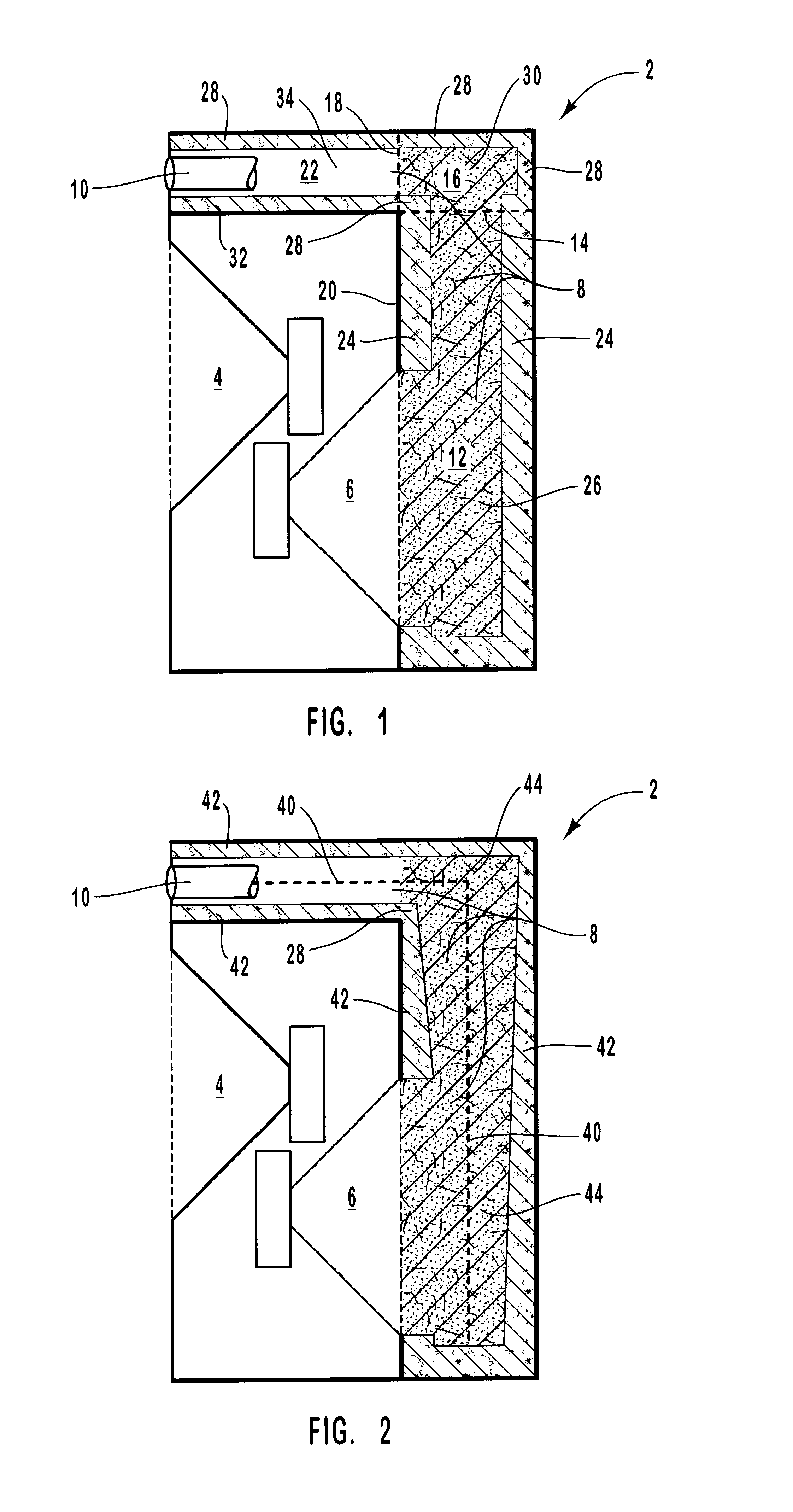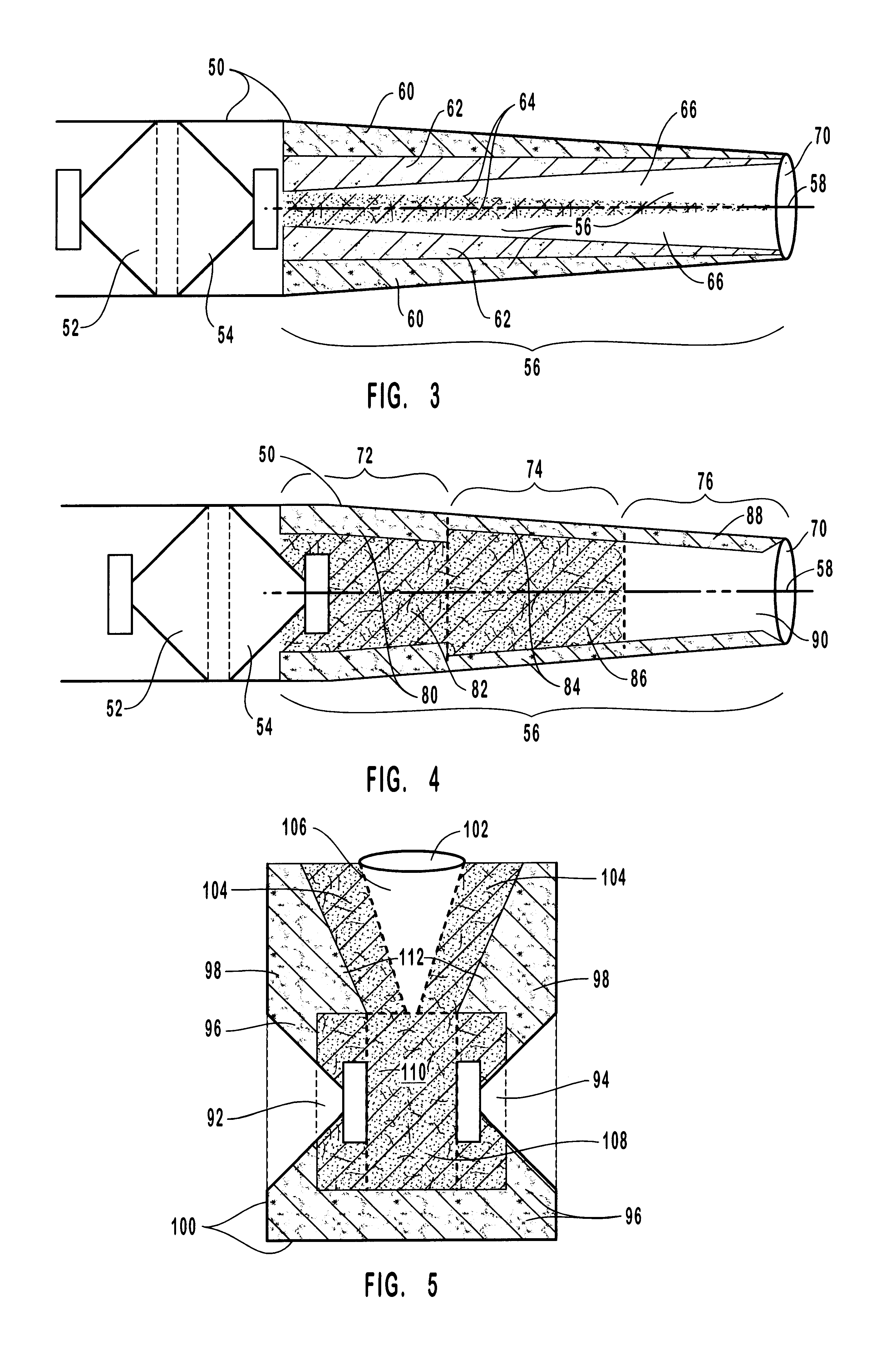Loudspeaker with progressively damped acoustical chamber
- Summary
- Abstract
- Description
- Claims
- Application Information
AI Technical Summary
Benefits of technology
Problems solved by technology
Method used
Image
Examples
Embodiment Construction
[0026]In the following description, preferred embodiments of the present invention are described by referring to functional diagrams, schematic diagrams, functional flow charts, program flow charts and other graphic depictions which help to illustrate either the structure or processing of preferred embodiments used to implement the apparatus, system and method of the present invention. Using the diagrams and other depictions in this manner to present the invention should not be construed as limiting of its scope.
[0027]In reference to FIG. 1, a first embodiment of the present invention comprises a speaker enclosure 2 with an exterior driver 4 and an interior driver 6 mounted therein. An acoustical chamber 8 is formed in enclosure 2. Chamber 8 extends from driver 6 to the exterior of the enclosure and may terminate at the exterior in a port 10 or some other type of opening. Chamber 8, as shown in this embodiment, may be regarded as having three sections. A first section 12 begins near...
PUM
 Login to View More
Login to View More Abstract
Description
Claims
Application Information
 Login to View More
Login to View More - R&D
- Intellectual Property
- Life Sciences
- Materials
- Tech Scout
- Unparalleled Data Quality
- Higher Quality Content
- 60% Fewer Hallucinations
Browse by: Latest US Patents, China's latest patents, Technical Efficacy Thesaurus, Application Domain, Technology Topic, Popular Technical Reports.
© 2025 PatSnap. All rights reserved.Legal|Privacy policy|Modern Slavery Act Transparency Statement|Sitemap|About US| Contact US: help@patsnap.com



